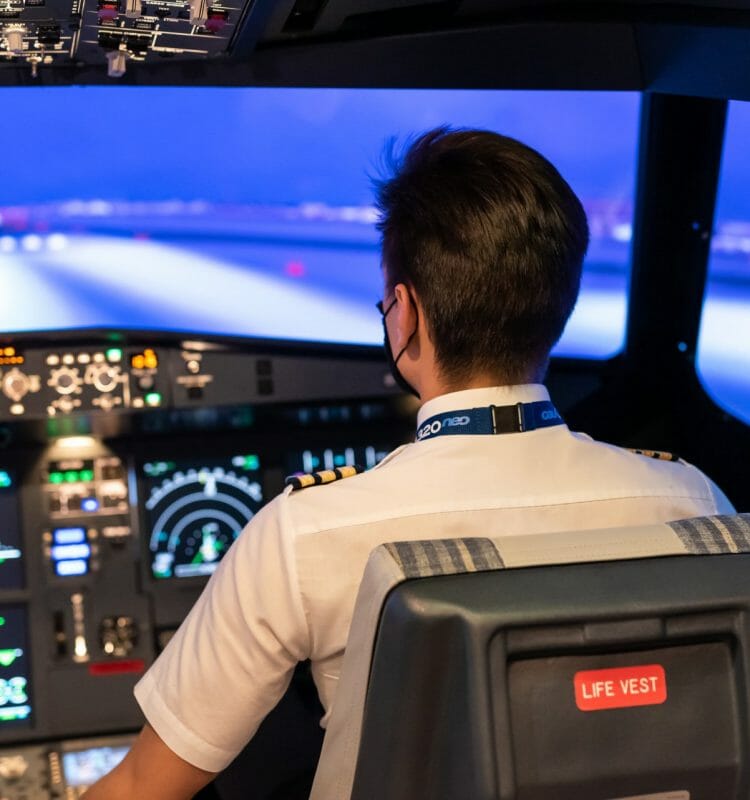EN


With the explosion in airline travel, demand for commercial airline pilots is expected to rise dramatically in the next two decades. Projections range from 450,000 to 790,000 pilots needed by 2035-2037 (Source: Forbes) This puts significant pressure on the aviation industry to execute a massive recruitment of pilots quickly and effectively. To meet this demand, pilot training systems must improve their training effectiveness.
While eye tracking has been used for years in various types of human factor studies within the aviation industry, there has been an increase in the demand within this sector. Analysis of the scan pattern during the vetting process when looking for new pilots is often done on a smaller desktop simulator, potentially leading to great cost savings by helping select the right candidates for flight training. Head and eye tracking can help analyze the movement and rotation of a pilot’s head, eyelids, and pupil size measurements, providing insights into the condition of the pilot.
“Firstly, Smart Eye’s solutions can be used to screen students before entry into flight school. Today, only 15–25% of students finish and become pilots. Secondly, they can be used to improve training,” says Solmaz Shahmehr, Vice President of Research Instruments.
Today in training, the instructor sits behind the pilot and is unable to determine where the pilot is looking. With eye-tracking, the pilot’s gaze can be measured accurately and unobtrusively.
Learning the proper protocol for instrument monitoring is therefore a crucial aspect of pilot training. According to the US National Transport Safety Board, 80 percent of flight crew-involved accidents had inadequate monitoring of instruments as a common factor. (Source: NTSB)
“Instructors are telling us that if only they knew where the pilot is looking, they could get to the root causes of student errors much quicker and provide much better instructions,” says Shahmehr.
Selecting candidates and training them to become pilots is a difficult process, as is certifying and training existing pilots. Before even stepping into the cockpit, eye tracking solutions such as Smart Eye’s can assist with pilot candidate screening. After this screening takes place, pilot training eye tracking technology, used along with simulator training, could identify problems with pilots’ instrument scans and help them correct their techniques for future flights and improve flight safety. Together with the instructor, the pilot can increase their awareness of monitoring behaviors they might never have noticed on their own.
Interested in eye tracking for pilot training? Contact us today to learn more or schedule a demo!

